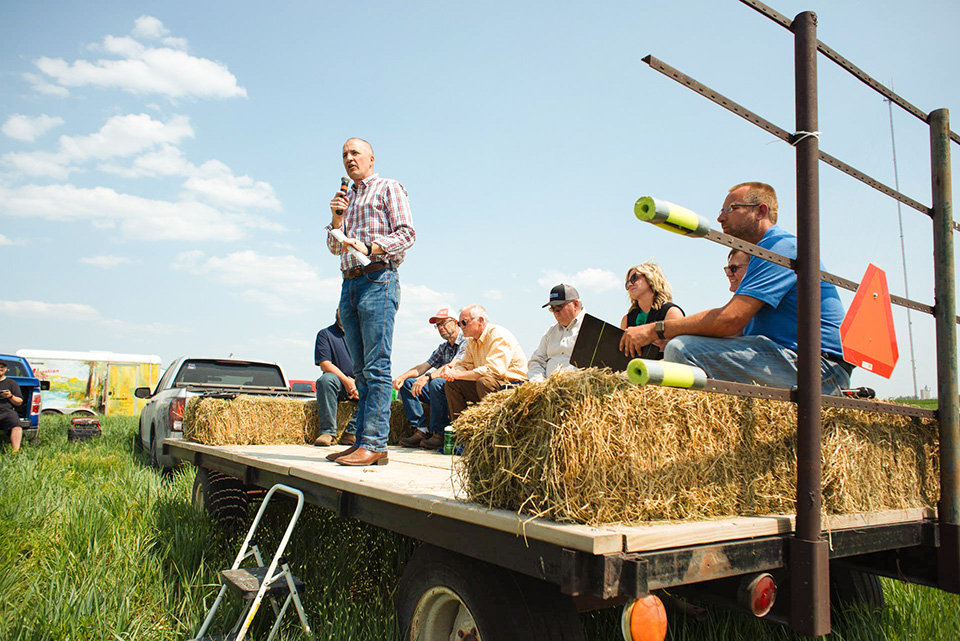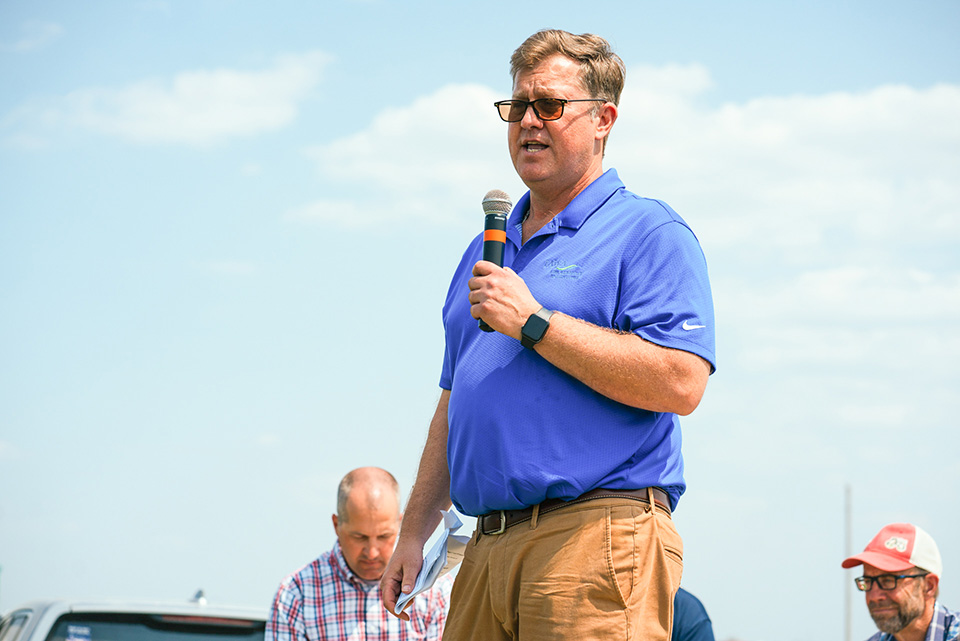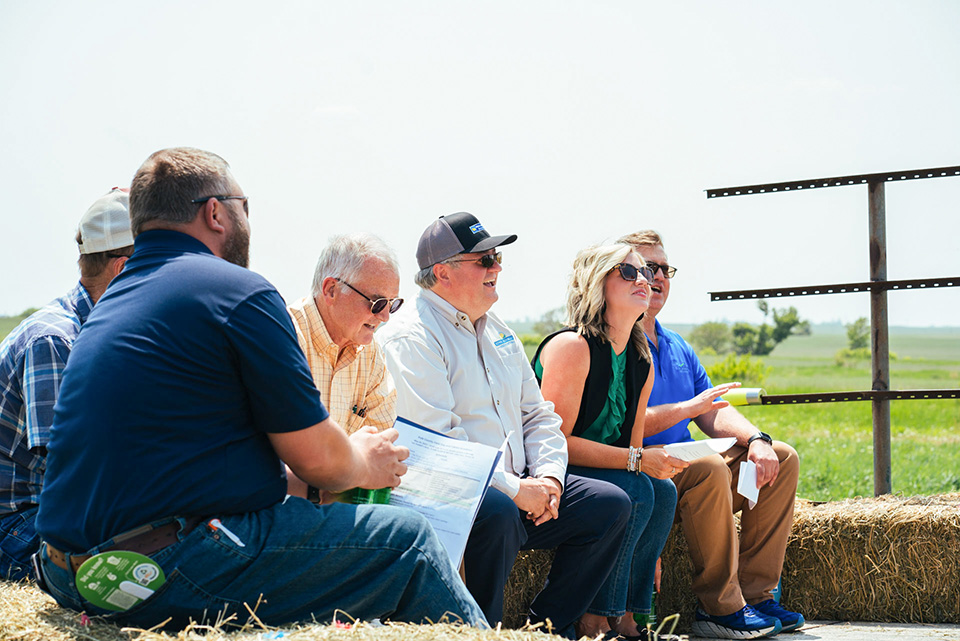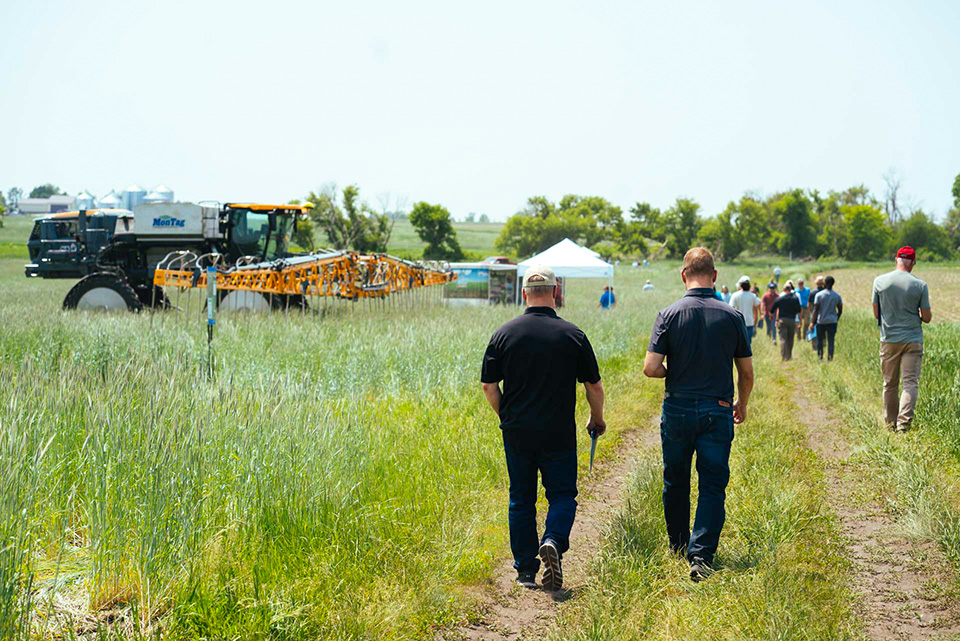
Iowa Secretary of Agriculture Mike Naig speaks during the Iowa's Defining Decade field day held at Lee Tesdell's farm in Polk County. (Photos by: Joseph Hopper/Iowa Soybean Association)
Mapping the next decade
June 1, 2023
"This strategy is the beginning. Operational plans are being developed and work is underway.
This is a dynamic document that will evolve over time, and is a key step towards improving
Iowa’s water quality." — Iowa Nutrient Reduction Strategy preamble, May 2013
We can’t have the future, without the past. In the preamble to the Iowa Nutrient Reduction Strategy published in May 2013, the document states “this strategy is the beginning.” 10 years on, much has been accomplished. But what will the second decade of the Iowa Nutrient Reduction Strategy look like?
Iowa Agriculture Water Alliance (IAWA) Executive Director Sean McMahon says the Iowa Soybean Association (ISA) is leading the way for positive change.
“ISA has really created a model we can follow, which is going to deliver a whole lot of promise in the next decade: that’s the conservation agronomist staff and the conservation agronomist network run by ISA,” says McMahon. “Historically, public sector cost-share has reached 7-10% of the farmers and the acres, and that’s great, that kind of represents the innovators, early adopters. We need to reach the middle adopters and late adopters, that’s what these conservation agronomists are going to do.”

To mark the 10th anniversary of the NRS, IAWA conducted a series of educational field days showing and discussing the progress being made on Iowa farms making a positive difference in the state. During the final Iowa’s Defining Decade Field Day, McMahon stood on a hayrack on a Polk County farm rife with innovative conservation practices and told the crowd attending the field day that there’s more work to do, so “the best is yet to come.”
The IAWA executive director also touted ISA-subsidiary the Soil and Water Outcomes Fund, a partnership between ReHarvest Partners and AgOutcomes (an ISA subsidiary), for charting a new course for a more robust value proposition for America’s farmers.
“There are a whole lot of carbon programs in America and throughout the world but very few of them pay farmers for carbon sequestration and reducing nitrous oxide emissions or other greenhouse gas emissions, and also water quality,” he says. “Soil and Water Outcomes Fund does that; with the same practice you can stack both those benefits on the same acres and pay farmers better.”

ISA CEO Kirk Leeds says the “defining” decade isn’t just a figure of speech. There’s been a great deal of learning in the first 10 years and now a better understanding of what it will take to reduce the movement of soil and reduce the loss of nutrients on the field.
“To me, the next 10 years are going to be about accelerated growth and accelerated adoption by farmers of these practices because we have data and information. I think the third leg is going to be technology,” Leeds says. “I think there’s an increasing a number of farmers embracing these changes. I think we’re going to see more farmers open to cover crops. I’m encouraged by farmers thinking about it, adopting practices and coming to field days.”
So what’s ISA’s role in the next decade of progress?
“Our role is to continue to accelerate the availability of that information,” Leeds says. “We’re in a great position. We have history, tradition, credibility based on nearly 30 years of research. ISA is positioned to be a leader and we need to be.”

Speaking during the final stop of the Defining Decade field days at Lee Tesdell’s farm in Polk County, Iowa Secretary of Agriculture Mike Naig stressed the need for deliberate action, continued collaboration and scaling up successes to keep progressing toward the goals outlined in the NRS.
“These are milestones where you take stock of what’s happened,” Naig says. Once an idea, partners combined their expertise and resources to bring the strategy to fruition, he says.
“We went from not even knowing about certain practices to seeing significant adoption today and we’ve laid groundwork that tells me we can accelerate the rate of adoption,” Naig says.
Naig expects the course of conservation adoption to be changed in the second decade since the creation of the NRS due to the efforts in the first decade.
“It’s a pretty basic formula in all reality, it’s just hard to do in practice,” says Naig, who farms with his family near Cylinder. “It takes sustained focus from government, from the private sector, focus from commodity groups, checkoff groups to stay at it, sustain the effort, sustain the focus, bring even more partners to the table and the result of that is even more work getting done.”
“That’s what we must do in order to be successful and remain productive and profitable in agriculture,” Naig says. “That’s what I would expect and what we’re striving for, to say in 10 years we changed the pace conservation was adopted in the state of Iowa.”
Back